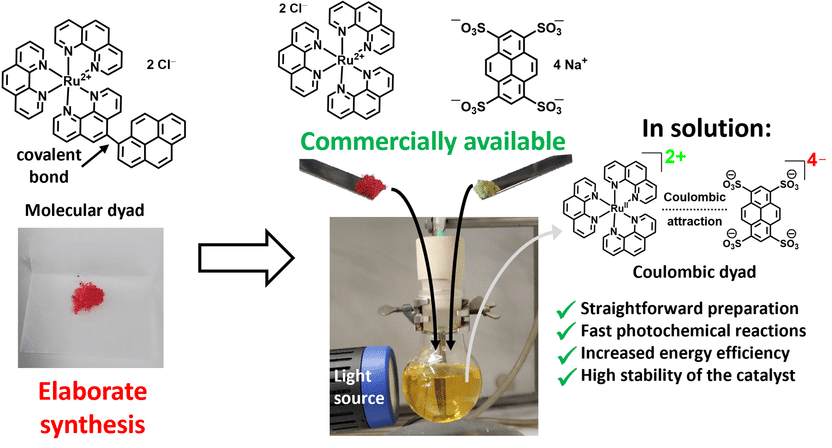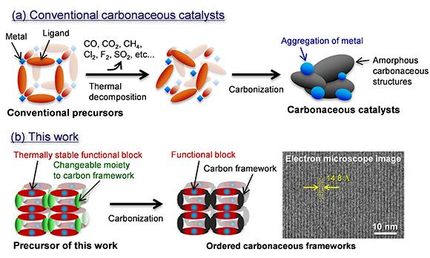Superior light-to-chemical energy conversion with Coulombic dyads
Scientists established a novel photocatalyst class that uses precious metals more efficiently
Advertisement
Inspired by nature's photosynthesis, photocatalysts use light to trigger a chemical reaction that would otherwise only occur at high temperatures or under harsh conditions. For this concept to be widely applicable in an economical fashion, the quantum efficiency of the light-induced transformation has to be high. Tailored photocatalysts with outstanding efficiencies in photocatalytic applications are oftentimes composed of two photoactive units with a covalent bond in-between. These so-called molecular dyads have to be prepared in a multi-step synthesis, which is why they would be too expensive for large-scale applications. A team of researchers led by Professor Christoph Kerzig of Johannes Gutenberg University Mainz (JGU) has now discovered a novel approach for the straightforward preparation of highly efficient dyad photocatalysts. Two commercially available salts are mixed and because of attractive electrostatic interactions, i.e., Coulomb interactions, the photoactive units form an ion pair that allows them to interact synergistically. "The concept is comparable to the attractive interactions between the sodium und the chloride ions in common table salt," said Matthias Schmitz, lead author of this study, who started working on photocatalysis in 2022. The manuscript on Coulombic dyads has been published recently in the Journal of the American Chemical Society.

Straightforward preparation and superior properties of the novel Coulombic dyad catalyst class
© Matthias Schmitz
A completely different approach and excellent results in first test reactions
Currently, many scientists try to "teach" non-precious metals to behave like well-established catalysts based on expensive elements such as iridium, ruthenium, or osmium. However, the preparation of these Earth-abundant metal photocatalysts frequently requires sophisticated ligands with time- and resource-consuming syntheses. "In contrast, our approach relies on established photocatalysts, and we 'simply' add inexpensive additives to improve their performance and durability characteristics even further," explained Kerzig. "This strategy has the potential to use a given metal-based photocatalyst much more efficiently, such that the required catalyst amount can be reduced drastically," he added.
The Coulombic dyads described in the current paper were identified and optimized through a spectroscopy-guided approach. Large-scale laser devices established in the Kerzig group have been applied to understand all key reaction steps from light absorption by the metal complex to the activation of the molecules that store the photon energy. Initial trial reactions with the novel catalyst class include reactions in which new chemical bonds between two carbon atoms are formed and the so-called photooxygenation of a wood-derived starting material. The results revealed that the Coulombic dyad is more effective than established and usually more expensive catalysts. Sunlight- and LED-generated light can thus be used and converted in a more efficient way leading to value-added chemical products.
Ongoing work on this versatile concept
Numerous widely used photocatalysts are ionic in nature. Hence, the researchers believe that the novel approach has the potential to be developed into a general strategy to improve the efficiency of light-driven reactions. Their highly promising experimental findings show that the solvent has a crucial effect. Depending on the solvent, different Coulombic dyads can be designed in a toolbox approach by combining different photoactive anions and cations.
The German Research Foundation (DFG) is funding this research through an individual research grant and the Chemical Industry Funds support this project through a PhD fellowship for Matthias Schmitz. This generous funding will enable further research activities in this direction, hopefully leading to the possibility of photoreactions on industrial scale with the novel photocatalyst class.






























































